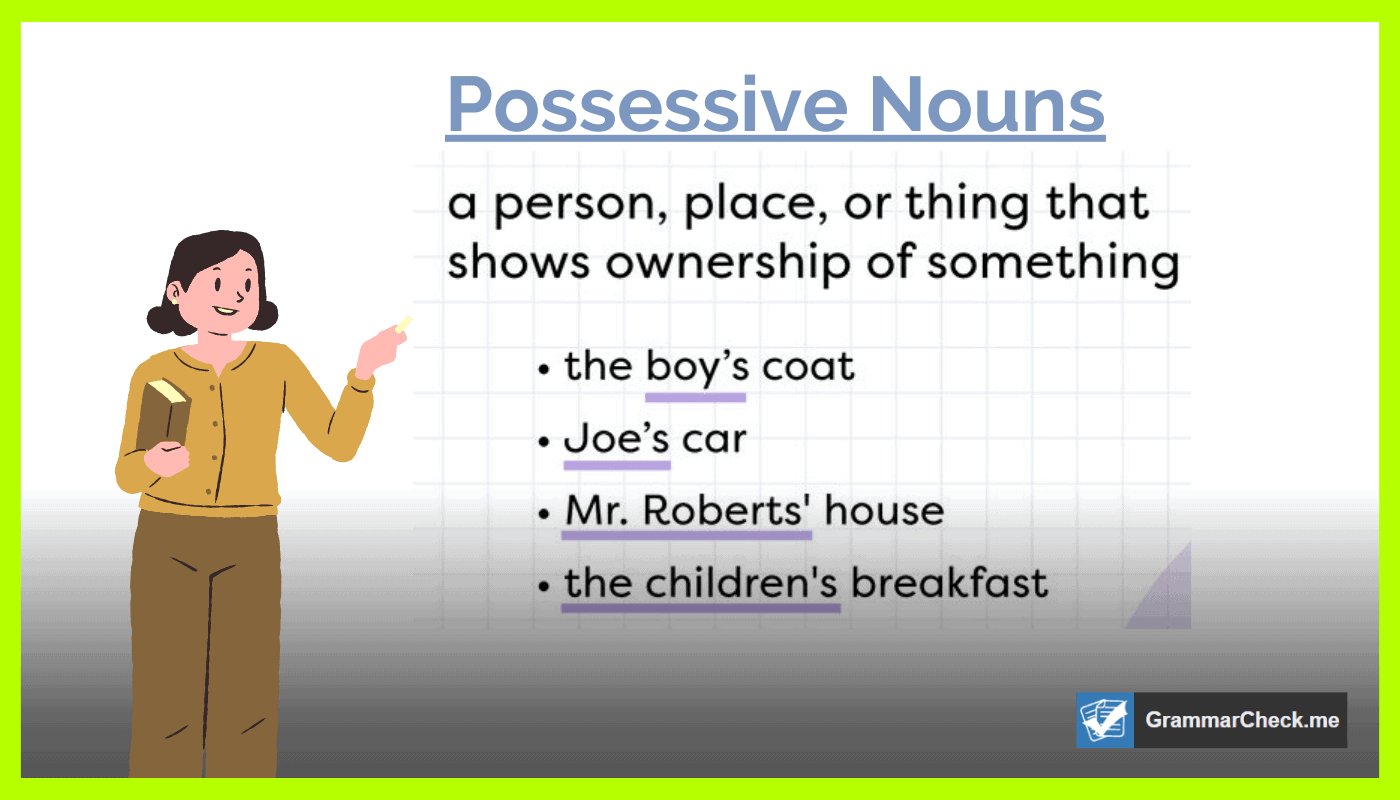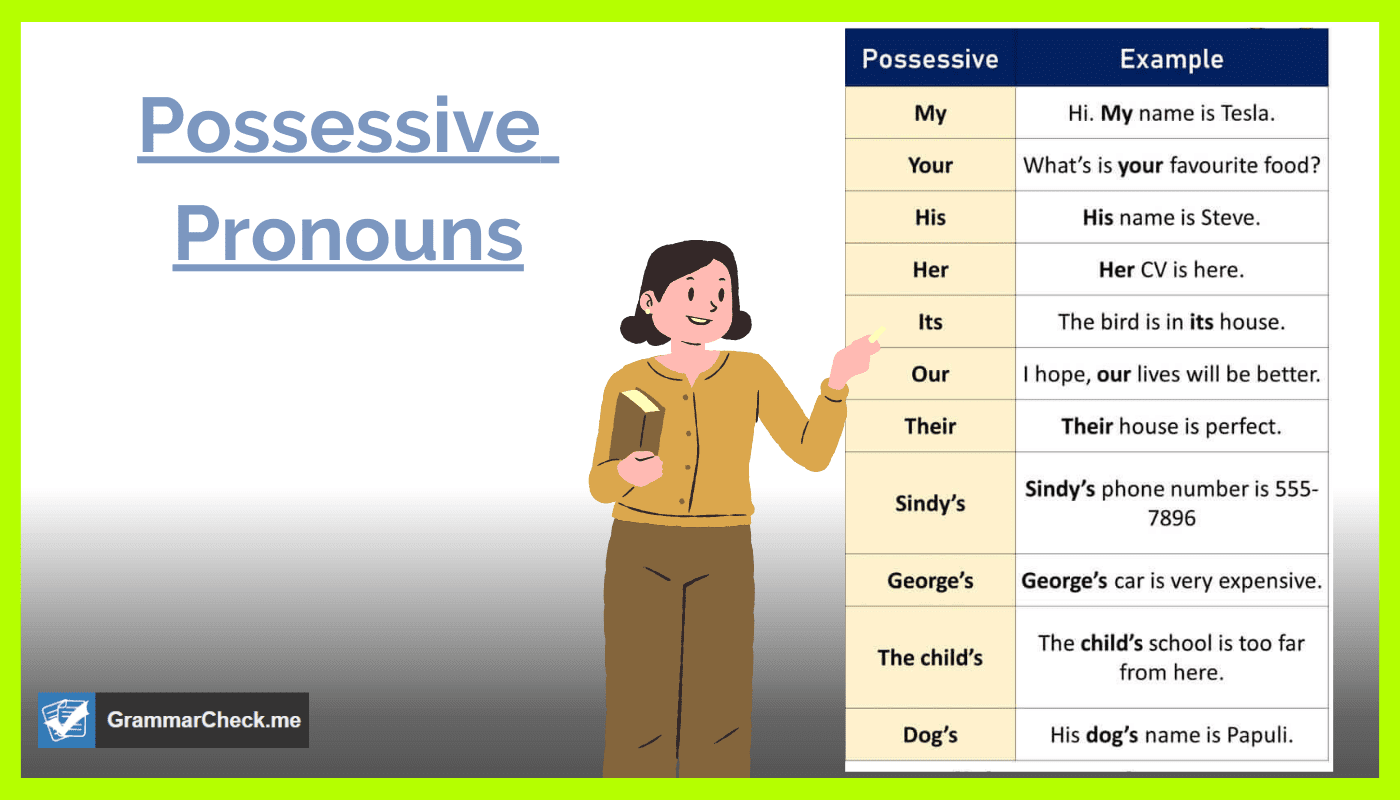What is a singular possessive noun, and how do you use them? Find out in this article.
The English language is full of various grammatical rules and categories, and nouns are no exception. There are several different nouns in English, and it’s essential to know when to use the right one and how to use it.
One type of noun you must know and already use all the time is a singular possessive noun. But what exactly is this type of noun?
Keep reading to learn what singular possessive nouns are and examples of how to use them in your writing. Plus, you’ll learn about other possessive nouns and how to use them properly.
What Is a Possessive Noun?

Before jumping into the answer to what is a singular possessive noun, let’s start by explaining what a possessive noun is and nouns in general. Nouns and pronouns are foundational concepts in writing.
To start, a noun is a word that refers to a person, place, idea, or thing. They can be singular or possessive. There are several different types of nouns, including:
- Proper nouns: Always starting with a capital letter, these nouns are used to name a specific person, place, idea, or thing – ex. Sandra, Australia, etc.
- Pronoun: Used to replace another noun already introduced – ex. she, her, he, him, they, etc.
- Common noun: Nouns that refer to a generic item, group, or place – ex. pen, school, car, etc.
A possessive noun, like Chris’s or Chris’, is a type of noun showing ownership or connection. You can make any noun a possessive noun. To make a noun a possessive noun, you must simply add an apostrophe and a suffix – the letter “s” – as in the following examples:
- Sandra: Sandra’s hair
- Australia: Australia’s Prime Minister
- Car: The car’s engine
If the plural noun already ends with the letter “s,” then you’re only required to add the apostrophe to turn it into a possessive noun. For example, to make the name Jess possessive, you simply add an apostrophe to the end as the name ends with “s,” so it becomes Jess’.
Now that you’re caught up with your nouns and know what a possessive noun like parents house is, let’s discuss the different types of possessive nouns, including singular possessive nouns.
What Is a Singular Possessive Noun?
There are four types of possessive nouns:
- Irregular possessive nouns
- Possessive pronouns
- Plural possessive nouns
- Singular possessive nouns
Let’s take a look at these types of possessive nouns to understand each of them better.
Irregular Possessive Nouns
An irregular noun is an important part of a sentence. It is defined as a noun that changes its spelling when it’s in its plural form. One example of an irregular noun is “woman” and “women.”
An irregular possessive noun is an irregular plural noun that shows possession. An irregular possessive noun behaves like a regular plural noun. You add an apostrophe and an “s” as a suffix.
In the previous example, “women” becomes possessive by adding an apostrophe and an “s,” therefore becoming “women’s.”
However, when the irregular plural noun ends with an “s,” then you just need to add the apostrophe, just as is the case with the word “knives,” which becomes “knives’” as a plural possessive noun.
Possessive Pronouns

A possessive pronoun is a pronoun that indicates possession. These are types of pronouns, like He and I vs Him and I, you regularly use in your everyday speech, and there’s a finite list of possessive pronouns. These include:
- Mine
- Theirs
- Yours
- Hers
- His
What’s more is that many independent possessive pronouns do not need the letter “s” added to the end of it, such as “her” and “my.”
Plural Possessive Nouns
A plural possessive noun describes ownership by more than one person, place, idea, or thing. The typical rule of adding an apostrophe and an “s” applies.
There are also plural possessive pronouns. Here are some examples:
- Our
- Your
- Their
Finally, there are plural possessive nouns that don’t need apostrophes and only end in the letter “s.” Examples are “parents” and “loaves.”
Singular possessive nouns
Finally, we have singular possessive nouns. Singular possessive nouns are one person, place, idea, or thing with a connection to or ownership of another element in that sentence.
What makes singular possessive nouns different from plural nouns is that they only refer to a single thing rather than multiple. This makes it easier to spot in a sentence and to use in your writing.
As with other possessive nouns, singular possessive nouns are formed by adding an apostrophe and an “s.” Here are a few examples of a singular possessive nouns in action:
- Jason’s lunch is ready.
- Toronto’s mayor is planning on running again.
- Elijah’s dog is sick.
Tips for Using Singular Possessive Nouns
Now that you know what singular possessive nouns are and have seen examples of how to use them, here are a few extra tips on using them and other possessive nouns.
- It’s possible to use two or more words to indicate possession, including creating a new single entity. This is called a compound possessive noun. Here’s an example: “Lily and Gerald’s home.” You only need the apostrophe and “s” in the last noun, “Gerald.”
- Whether inanimate objects should become possessive nouns is still inconclusive. For example, “the tree’s trunk” vs “the tree trunk.” While this may be confusing, both can be considered right.
- Remember, even if a singular noun ends in “s,” such as “molasses,” an ‘s is still added.
Final Thoughts
Singular possessive nouns are essential to fully understanding English grammar rules. However, they’re easy to use once you get the hang of them. If you need more help, use our grammar check sentence tool for FREE! Hopefully, you learned more than the answer to “what is a singular possessive noun” and feel more confident using all types of nouns in the future.
